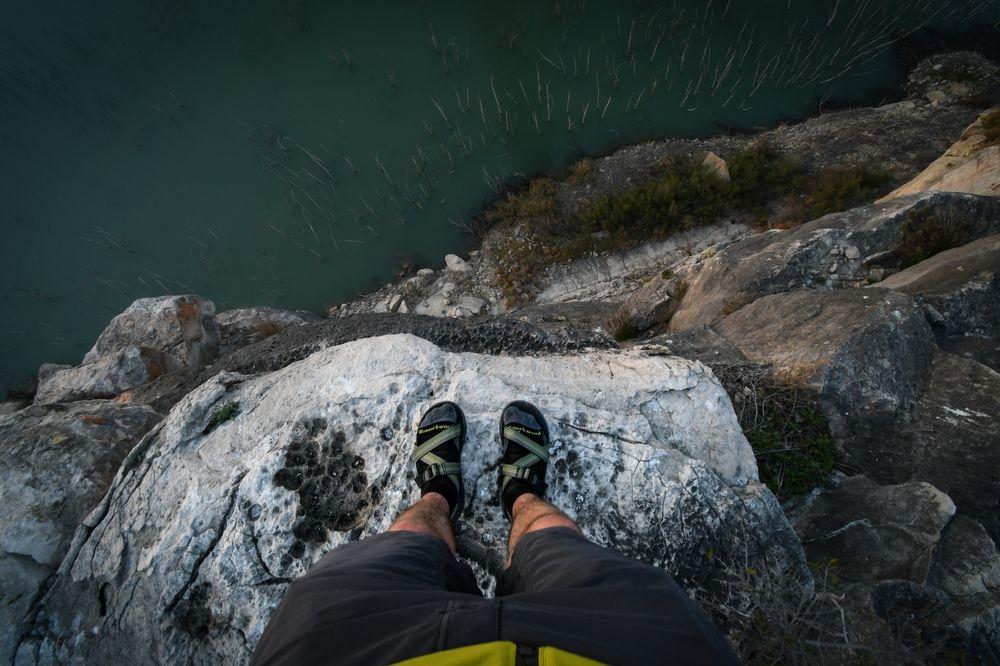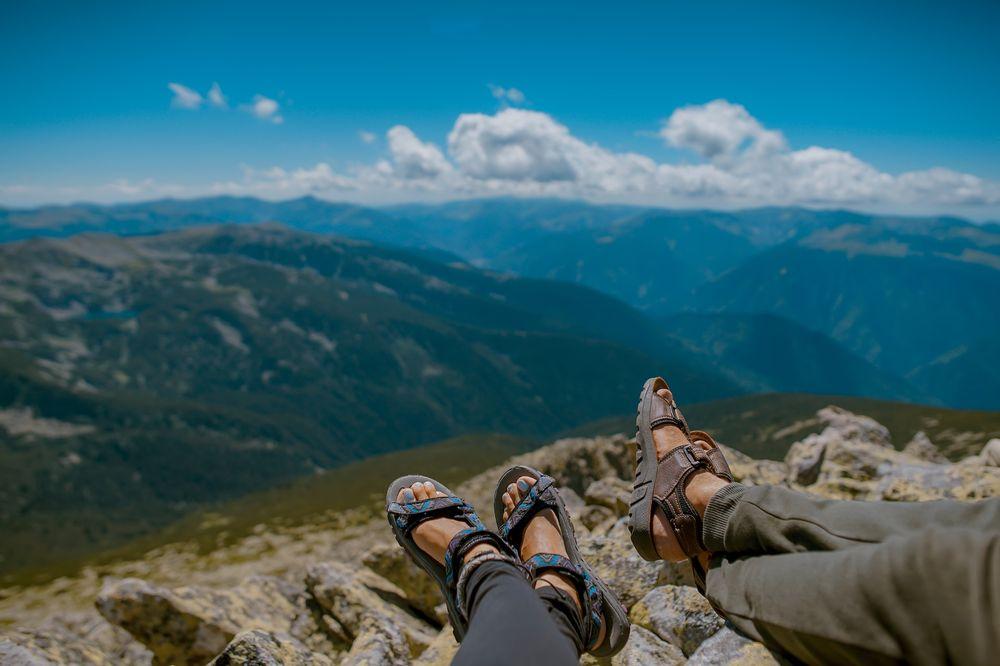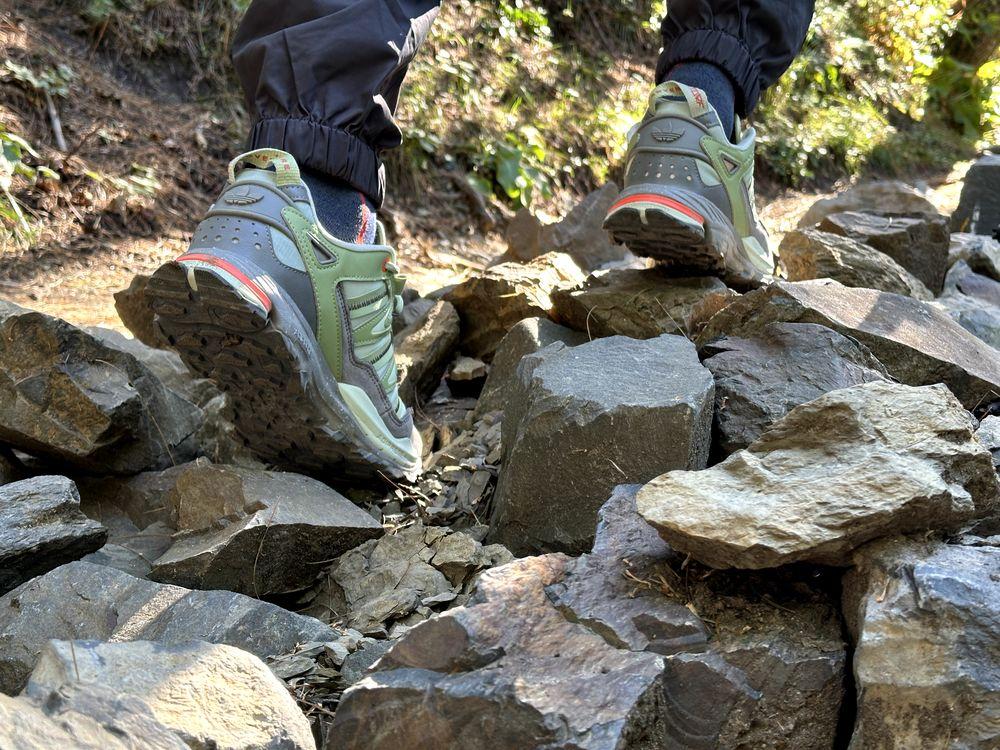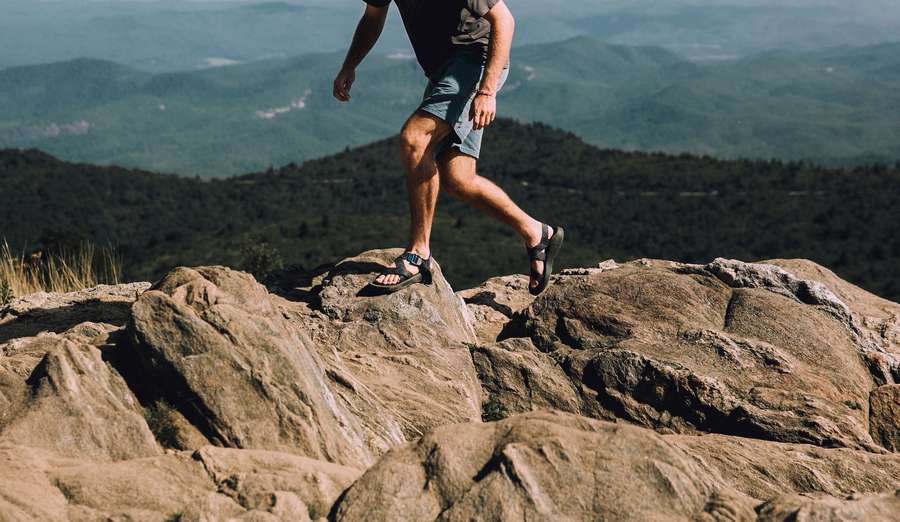I often get asked, especially by new hikers, if hiking in sandals is okay.
When it comes to hiking, having the right footwear is super important. You want to make sure everything runs smoothly. And if you’re backpacking, you definitely can’t take risks with bad shoes. They’ll not only hurt your feet but also ruin your whole trip.
Lately, sandals have become popular among hikers because they’re stylish and lightweight. But here’s the big question: Are sandals really good for hiking? Can you hike for hours in them? And when can you wear sandals, and when can’t you? Let’s get straight to the point!
We need to look at the pros and cons of sandals. What are the good things about them, and what are not?
Related: Best Hiking Sandals
Men’s and a wide range of women’s hiking sandals are available. In this article, we will find out the truth of these claims and test their mettle.
Benefits of Hiking in Sandals
We have listed a few reasons which make sandals a great choice for hiking.
Better Breathability
Scorching heat and blistered feet are a hiker’s worst nightmare. Hiking in boots sounds safe and reasonable, but a layer of hiking socks and the thick interior of hiking boots wreak havoc on feet during hot summer days. That means your feet sweat even with the breathable boots. This can lead to blisters with just a little friction.

This is where hiking sandals come to the rescue. Their minimalist design ensures limited contact with feet and a scar-free journey.
Due to their excellent ventilation design, hiking sandals are ideal for daytime hiking. They truly are a breath of fresh air on long and tiring hiking journeys.
Imagine you are hiking on the Appalachian Trail, and the dewy grass grazes your feet, giving you a feeling identical to walking barefoot on grass on a midsummer’s eve. No matter how comfortable, a pair of boots could not provide a feeling even closer to this.
Please be aware that poorly designed sandal straps can cause discomfort and cause sore feet. For instance, Chaco Z/1 Classic are highly regarded for their exceptional flexibility and comfort. However, you can adjust the straps for better fit and comfort. Not all sandals come with adjustable straps, though.
Ease of Crossing Stream
Wouldn’t you prefer to have separate pairs of footwear for water hiking? You won’t like it. Extra weight kills hiking performance. So, why not go for an all-around shoe? Fortunately, numerous waterproof models of hiking sandals are available on the market.
Unlike boots, these sandals allow you to confidently cross streams without removing them. Imagine the inconvenience of having to remove your boots, then your socks, and then struggle to dry your feet and tie your shoes again before continuing your hike.
It is time-consuming and puts your feet at risk of injury from stones or other sharp objects in the water while crossing it barefoot.
Sandals are usually waterproof and dry quickly due to their minimalist and quick water drainage ability while saving your feet from objects inside the water.
Sandals are Lightweight
Extra weight in your backpack can be burdensome; even on short hikes, it pulls you down and forces you to stop again to catch your breath. The same principle applies to your feet.
Boots and shoes add more weight to your feet than sandals, tiring your feet quickly. Even trail runners, which I typically prefer for hiking excursions, are heavier than sandals due to their construction. Undoubtedly, boots offer excellent protection on rugged trails.
However, during the summer season, sandals prove to be an excellent choice for most hiking terrains. Hiking sandals like KEEN Newport H2 are equipped with impressive tread patterns that provide traction on the trail and water.
Throughout my encounters with various physiotherapists, they have consistently emphasized that heavy footwear not only puts strain on the feet but can also lead to spinal damage. As a hiker, who understands the significance of a healthy spine better than anyone else? And what better footwear option for hiking than lightweight sandals?
Pesky Pebbles Don’t Stand a Chance
Have you ever encountered a situation where a tiny pebble found its way into your hiking shoe, and no amount of turning and twisting your foot gets it out?
Then, you must untie your shoe and go all in to get rid of it. Well, guess what? You do not have to go through this tedious process with sandals. The rock would not only be visible to the naked eye but would also be easily accessible.
Can Be Used as Camp Shoes
What is the first thing you do after completing a strenuous hike and arriving at the campsite? Sit down, remove your shoes, and give much-needed air to your feet. You only bother a little if you wear sandals due to their great ventilation and lightweight design.

However, if you have opted for boots during the hike, you must carry a separate pair of camp shoes, which add additional weight to your pack. On the other hand, sandals serve a dual purpose as they can be used for both hiking and unwinding at the campsite.
Drawbacks of Hiking in Sandals
Nothing is perfect, so here are some reasons which make sandals not so great of a choice for hiking.
Chills Down The Spine
If your feet are warm, no matter how cold your upper body gets, you always have the will to survive. But cold feet could throw you into a frenzy. Sandals could be your worst enemy on a winter’s day hike.
Even if you wear socks with sandals, some people consider it against fashion, but still, your feet will be cold. And winter rain can screw you further. In such a situation, proper boots with good insulation and socks are a suitable option instead of sandals.
Feet protection
Unlike boots, the dirt and debris attached to the soles of the sandals would eventually make their way to your feet. This will not only add displeasure to your hiking journey but will also deplete your water supply because, after every mile, you will be compelled to wash your feet. Plus, constant contact with soil could also cause rashes on the skin.

And if you wear them on rough terrain, your toe might hit the rock and other elements on the trail. That would completely throw you off the hook. I would not recommend wearing sandals for a hike at night. It can be dangerous due to the presence of reptiles on the majority of the trails.
A nice pair of boots to fully cover my feet would be my go-to choice for hiking.
Feet Tanning is No Fun
Wearing a sandal on a hike means a major portion of your feet is exposed to sunlight. No matter how much sunscreen lotion you have applied, skin exposed to the sun needs SPF after every half an hour.
Either you stop after every half an hour to reapply sun protection or risk getting your feet tanned, which would be red and itchy at the end of the day.
Tips To Buy The Ideal Pair of Hiking Sandals
Fit And Sizing
Proper fitting hiking footwear is very important; when I say proper, that means snug fit. Not loose or tight. However, what if you rely solely on knowing your size and make a purchase online? Unfortunately, that’s not enough if you have never tried that brand.
Size can vary significantly across different brands, which makes it difficult to buy the same brand size from another. We strongly advise you to try and test the shoe before making a purchase. Plenty of foot measurement devices are also available that can tell your accurate foot size, including length, width, and arch length.
Sandals come with both fixed and flexible strap designs so that you can opt for either of them based on your preference and the sung fit. A fixed strap may cause bruising on the foot if sandals do not fit snugly. Go for sandals with adjustable straps if you would like to gain more control over flexible fittings for your comfort.
As I said, the shoes should snugly fit around your entire foot and allow ample space for your toes to wiggle freely. This way, you certainly cannot go wrong with the sandal’s size, which directly contributes to your hiking performance.
Traction And Grip
Depending on the trail, choose sandals with reasonable traction. Tread patterns vary from sandal to sandal. It depends on the type of activity you are doing. More rough and slippery trails with water crossings need good traction.
Look for sandals that have above-average tread density and thickness, as this will provide better grip.
Normal day-to-day sandals offer a light tread with cushioning to absorb the impact and provide comfort but are unsuitable for hiking trails that require a more rugged tread pattern to keep you from slipping. Xero Z-Trail EV Sandals provide better traction and is suitable for most hiking trails that require reasonable traction.
Lightweight
Sandals are generally less bulky than boots due to their minimalist design. Look for lightweight sandals, especially for long hikes or backpacking. With a small backpack, your feet won’t hurt from extra weight on short hikes.
However, bulkier sandals will tire you out on longer hikes and with heavy backpacks. One potential drawback of the lightest sandal models is their lack of padding and support, which can compromise comfort.
Take, for instance, the Xeros Z-Trail sandals. While they are significantly lighter than Chacos, they do not offer the same padding and support as Chaco Zcloud Sport Sandal, but with a few extra ounces. That is why we advise you to wear them, test them, and see if you are comfortable with the weight-to-comfort ratio. Of course, the real test will start on the trail, but with time, you will get better at choosing the right pair considering the trail difficulty, length, etc.
If you plan on water hiking, look for a more aggressive tread pattern to provide a solid grip on deck, on wet rocks, and during water crossings. For example, Keen water shoes provide the needed grip for water sports and hiking with quick drainage ability.
Toe Protection
The next question is whether to choose closed-toe or open-toe sandals for your hiking adventure. This decision depends on the type of trail you plan to hike and your personal preference.
When hiking on rough and rugged terrain, you will encounter stones and tree branches that can easily strike and injure your toes. In such situations, closed-toe sandals offer superior protection.
Additionally, when crossing streams, closed-toe sandals are safer as they prevent unseen objects in the water from causing harm to your toes. However, open-toe sandals can suffice if you are exploring a well-maintained and relatively simple trail.
Open-toe sandals provide better ventilation for your feet during summer when breathability is crucial. However, opting for shoes like hiking boots or trail runners for long walks on rough trails is a better option than sandals.
Conclusion: Can You Hike in Sandals?
Yes, You can hike in sandals, as sandals are a great choice for hiking due to their breathability, ease of crossing streams, lightweight design, and the ability to be used as camp shoes. However, they are unsuitable for winter hikes, provide less foot protection, and can lead to foot tanning. Look for sandals with snug fitting, above-average traction, and lightweight design. If the trail is rough and rugged, hiking boots are a better option for solid grip, ankle support, and foot protection from stones and other elements.
Related: Are Tevas Good For hiking
Related: Can You Hike in Steel Toe Boots?
